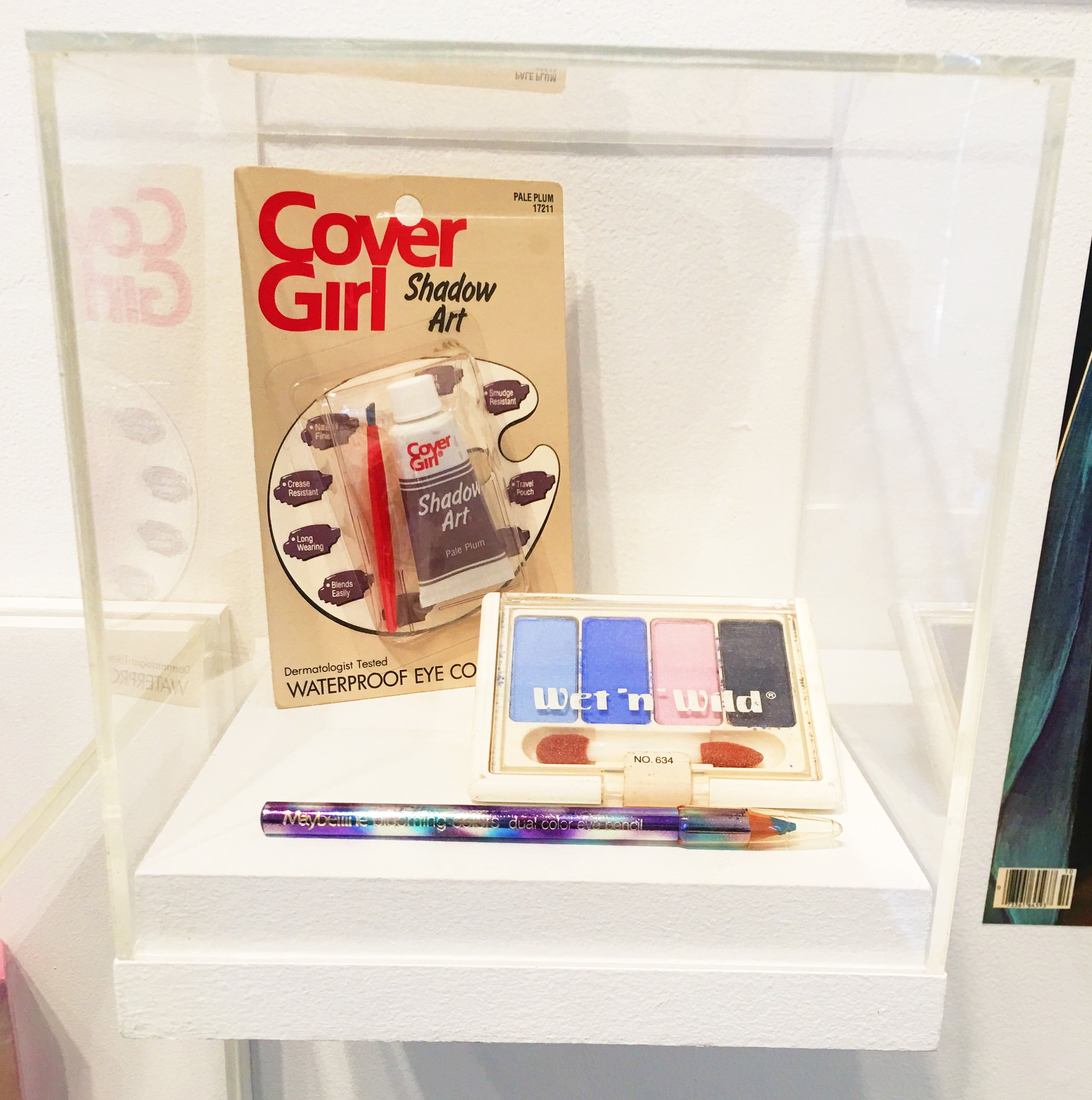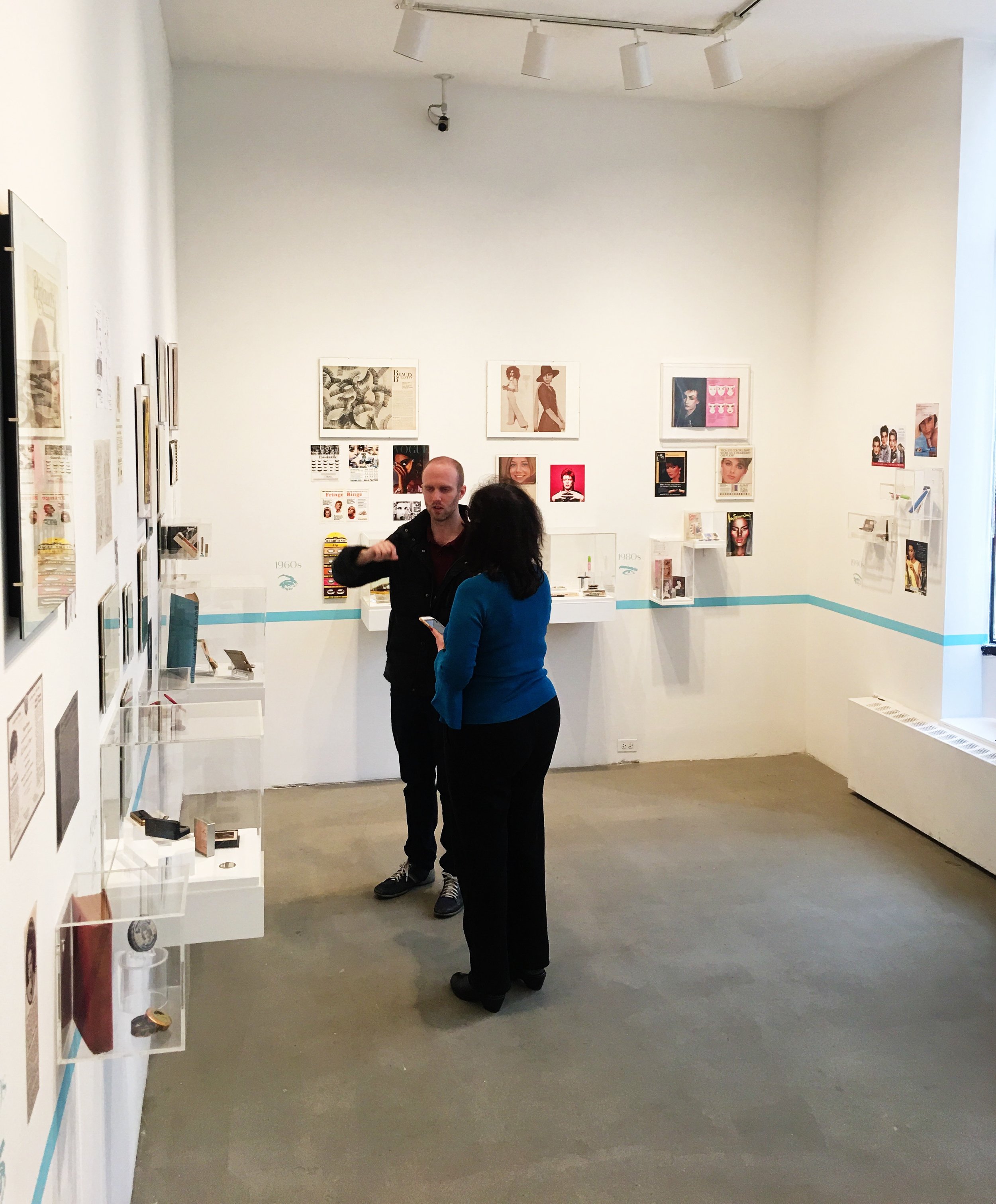Exhibition Review: The Eye of the Beholder: Decade-Defining Lids, Lashes, & Brows
80WSE Gallery (New York), January 13 - February 2, 2018
The 80 WSE Gallery is a challenging space to work with. It feels smaller than my freshman year dorm room, which was famous for being 8 1/2 x 11 and shared by two people. To undertake a broad subject in such a limited space is a daunting task. Narrowing the theme to eyes seemed sufficient at first. But my overwhelming impression of the exhibition was, well, underwhelmed.
I was wanting a thesis statement — a through line. An opinion. A stake in the ground. What’s the drama? What is the question being asked or answered, or what is the untold story being revealed?
Surveys can be difficult to undertake; but done well, you get an explanation of what the curator wants to achieve at the outset and that guides how you see the exhibition. The smaller the space the firmer the hand that guides you must be.
I wanted to use the exhibition introduction as my guide. The first and last lines read, “arguably the most distinctive feature of the face, eyes possess the power to dramatically transform one’s outward appearance and uniquely convey inner character…. Although eye aesthetics are ever changing, the pursuit of “ideal” beauty — whether paradoxically natural or conspicuously artificial — is remarkably enduring.”
But is it remarkable? Makeup is interesting. Eye makeup is interesting, but brows only change in so many ways. What I found more interesting was makeup technology (chemistry, user design, etc.) and the different ways women have used makeup, or altered their appearance, rather than the trends. I don’t think it’s remarkable that makeup has endured.
On a visual level, the exhibition consisted of a series of eleven vignettes, each representing a decade in American history from the 1910s to the 2010s. Each vignette included trends across different areas of enhancement, color palettes, application methods, and advertising tropes.
In the 1910s, women were doing things to their eyes that I’m surprised didn’t turn them blind! Apparently, “a lady could consult beauty books and guides to concoct at-home “eye tonics,” containing belladonna to dilate the pupil, yellow oxide of mercury to brighten the eyes, and powdered alum and zinc sulfate to enliven dull lids.” We’ve come a long way in beauty, since then. I find it odd when people dismiss “beauty science” as being fake, but pigments, formulas and finishes are chemistry. To get mascara from being a powder or cream in cake form to being a liquid in a tube is both chemical and mechanical engineering.
“I’m well aware of the fact that fashion history — all history, really — privileges the privileged.”
While little vignettes seemed sufficient for the early 20th century, by the 1990s it seemed woefully inadequate. The later years become more of a survey — maybe because more things were going on so they couldn’t go as in-depth describing the colors, formulas, techniques, and goals. I do think it’s due, at least in part, to how expansive makeup has become. It goes hand-in-hand with how so many ideas and practices have become commodified and part of an industrial complex. But it also makes me wonder what else was left out.
This isn’t specific to this exhibition. I’m well aware of the fact that fashion history — all history, really — privileges the privileged. The idea that there is ever one narrative is a complete fallacy. For example, the 2010 vignette declares that, “In the 2010s, artificiality and authenticity factor heavily into the decade’s dialogue. The ideal eye has shifted from Kim Kardashian’s spider lashes to full brows and barely-there eye makeup à la Cara Delevingne”. But that is not the story on YouTube! In 2018 we are still highlighting, contouring, strobing, baking, and throwing unicorn glitter on everything.
This is the question I always have: What was being advertised and what were women actually doing? If I brought my grandmother, would she corroborate the accounts of the 40s, 50s, and 60s? Along those lines, prior to the 2000s vignette there was no mention or acknowledgement of the makeup needs or trends of non-white, non-entertainer women (i.e., Eartha Kitt or Grace Jones). Mexican-American Chola culture, which emerged out of the 30s and 40s, was a beauty standard all its own. No doubt those women were creating their looks with Revlon, CoverGirl, and other such brands featured in this exhibit. These omissions parallel the lived experience of black and brown women during that time, and is exactly the hole that Fashion Fair cosmetics was created to fill; and for which, decades later BlackUp, and Stellar (for South Asian women) continue to take up the mantle.
This brings me to the closing line of the exhibition: “Moving into the 2020s, cosmetics consumers will have an unprecedented amount of choice. What will constitute beautiful eyes in the coming years? This will be left to the beholder to decide.”
In reading this closing assessment, I got stuck on the word choice. It’s interesting to assume that, with the passage of time, people will inevitably have more choice. Some people will always have more choices. Indeed, the fact that in 2017, Fenty Beauty rocked the makeup world with a line of foundations that left not a single skin tone behind is actually quite remarkable. Can you believe it took that long? Now that we’re P.F. – Post Fenty – perhaps choice will finally include women (and men) of all ethnicities. And maybe, radically, the most important beholder will be ourselves.




